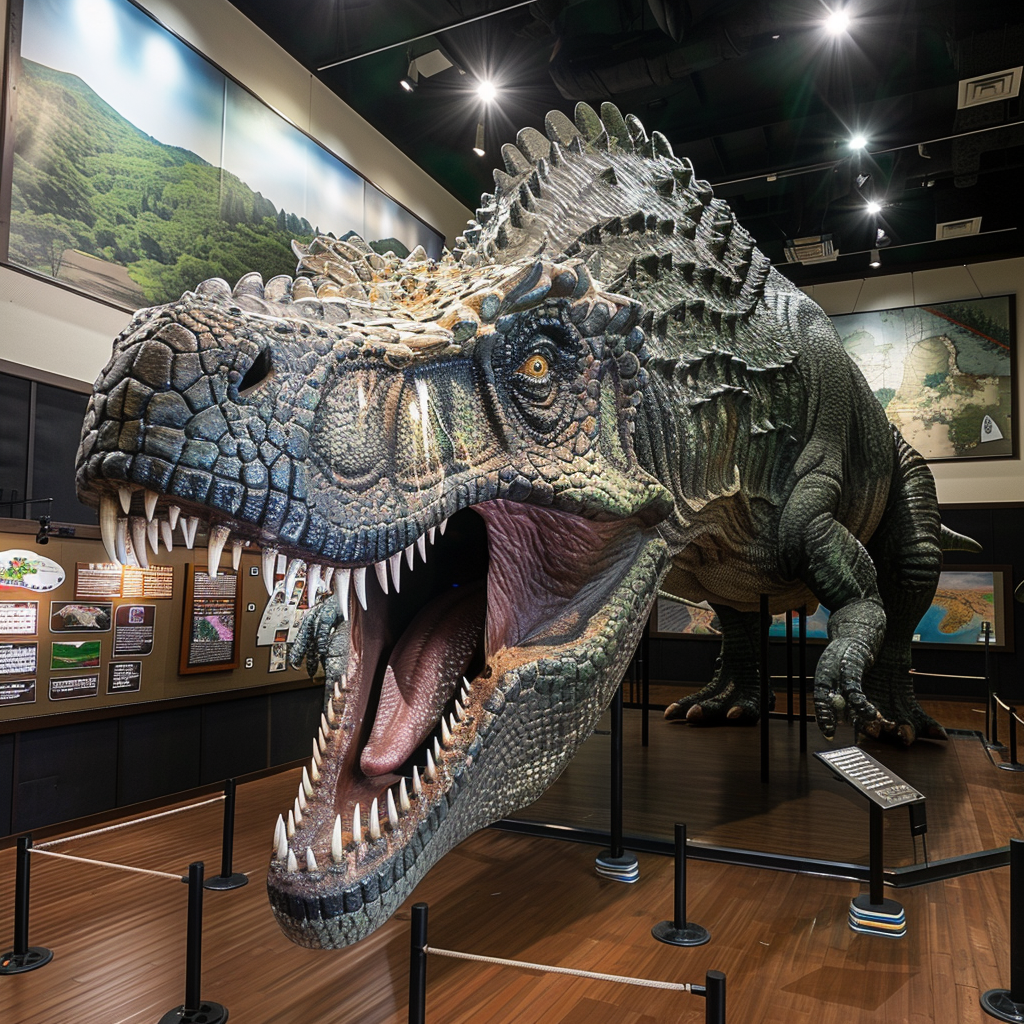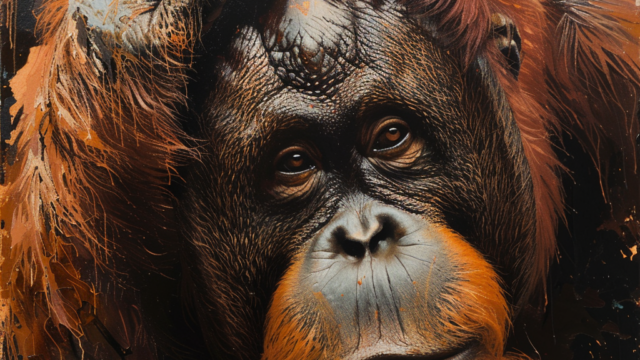
Fukui Prefecture Booms as Golden Week Travel Destination
Fukui Prefecture saw the highest growth in domestic travel destinations during Golden Week, thanks to the Hokuriku Shinkansen extension. The Fukui Prefectural Dinosaur Museum also saw an increase in visitors from the Kanto and Koshinetsu regions. The museum’s collaboration with the prefecture and city helped attract more visitors. (48語)
日本語訳
「福井県、ゴールデンウィークの国内旅行先として急成長」
北陸新幹線の延伸により、ゴールデンウィーク期間中の国内旅行先として福井県が最も高い伸びを見せた。福井県立恐竜博物館も、関東・甲信越地方からの来館者が増加した。博物館と県・市の連携が、より多くの来訪者を呼び込むのに役立った。

単語・熟語チェック
・boom 急成長する、ブームになる
・destination 目的地
・extension 延長、延伸
・Hokuriku Shinkansen 北陸新幹線
・prefectural 県立の
・dinosaur 恐竜
・museum 博物館
・region 地方、地域
・collaboration コラボレーション、連携
・attract 引き付ける、呼び込む
・visitor 訪問者
単語解説
・boom
⇒急激に成長する、人気が高まるという意味の動詞。名詞形だと「ブーム」「好況」などの意味になります。ここでは福井県が旅行先として急激に人気が高まったことを表現しています。
・destination
⇒目的地、行き先という意味の名詞。旅行や移動の際の到着地点や目標とする場所を指します。ここではゴールデンウィークの旅行先として福井県が選ばれていることを示唆しています。
・extension
⇒延長、延伸、拡張などの意味がある名詞。ここでは北陸新幹線の路線が延びたこと、つまり延伸したことを指しています。交通インフラの整備が福井県の観光に好影響を与えたことがうかがえます。
・prefectural
⇒県立の、県に関するという意味の形容詞。日本の行政区分である都道府県が設置・運営する施設などに使われます。ここでは福井県が運営する恐竜博物館を指しています。
・collaboration
⇒協力、連携、コラボレーションなどの意味がある名詞。異なる組織や個人が協力して何かを行うことを指します。ここでは博物館と県・市が連携して集客に取り組んだことを表現しています。
原ちゃんチェック
交通アクセスの向上が地方の観光振興に大きく貢献する好例ですね。北陸新幹線の延伸で福井県がより身近な旅行先になったことが、ゴールデンウィークの人気に直結したのでしょう。
恐竜博物館も、県外からのお客さんを呼び込む上で大きな役割を果たしたようです。地域の魅力的な観光資源を上手くアピールすることが、交流人口の拡大につながります。博物館と自治体が一体となって集客に取り組んだ成果だと思います。
ウィズコロナ時代の観光のあり方が模索される中、地方の隠れた魅力を再発見する動きは今後も続きそうです。感染対策を講じつつ、地域の個性を生かした観光振興策に期待したいですね。交通の利便性向上と魅力的なコンテンツ作りの両輪で、地方創生の流れがさらに加速することを願っています。
関連URL
原田英語深堀りチェック
【恐竜に関する英語表現20】
1. Jurassic [ジュラ紀] – The geological period during which many dinosaurs lived. (多くの恐竜が生息していた地質時代)
例文: “The Jurassic period was a golden age for dinosaurs.”
2. Fossilized [化石化した] – The process by which remains of ancient organisms, such as dinosaurs, are preserved in rock. (恐竜などの古代生物の遺骸が岩石に保存されるプロセス)
例文: “The fossilized bones of the Tyrannosaurus Rex were discovered in Montana.”
3. Extinction [絶滅] – The complete disappearance of a species from Earth. (地球上からある種が完全に消滅すること)
例文: “The extinction of the dinosaurs was likely caused by a massive asteroid impact.”
4. Paleontologist [古生物学者] – A scientist who studies fossils and ancient life forms, including dinosaurs. (恐竜を含む化石や古代の生命体を研究する科学者)
例文: “Mary Anning was a famous paleontologist who discovered many important dinosaur fossils.”
5. Carnivore [肉食動物] – An animal that primarily eats meat, like many dinosaurs. (多くの恐竜のように主に肉を食べる動物)
例文: “Velociraptor was a fierce carnivore that hunted in packs.”
6. Herbivore [草食動物] – An animal that primarily eats plants, like some dinosaurs. (一部の恐竜のように主に植物を食べる動物)
例文: “Brachiosaurus was a giant herbivore that fed on the leaves of tall trees.”
7. Cretaceous [白亜紀] – The geological period that followed the Jurassic and marked the end of the dinosaurs. (ジュラ紀に続き、恐竜の終焉を迎えた地質時代)
例文: “The Cretaceous period ended with a massive extinction event.”
8. Sauropod [竜脚類] – A group of large, long-necked, herbivorous dinosaurs. (大型で長い首を持つ、草食性の恐竜のグループ)
例文: “Diplodocus was a massive sauropod that could reach lengths of up to 30 meters.”
9. Theropod [獣脚類] – A group of bipedal, mostly carnivorous dinosaurs, including T. Rex and Velociraptor. (ティラノサウルスやヴェロキラプトルを含む、二足歩行の主に肉食の恐竜のグループ)
例文: “Theropods were some of the most fearsome predators in the dinosaur world.”
10. Raptor [ラプトル] – A term often used to refer to dromaeosaurid dinosaurs, like Velociraptor. (ヴェロキラプトルのようなドロマエオサウルス類の恐竜を指すのによく使われる用語)
例文: “Raptors were small but deadly predators, known for their sharp claws and quick movements.”
11. Prehistoric [先史時代の] – Referring to the time before recorded human history, when dinosaurs lived. (恐竜が生息していた、記録された人類の歴史以前の時代を指す)
例文: “Dinosaurs ruled the Earth during the prehistoric era.”
12. Mesozoic [中生代] – The geological era that includes the Triassic, Jurassic, and Cretaceous periods, known as the “Age of Dinosaurs.” (三畳紀、ジュラ紀、白亜紀を含む地質時代で、「恐竜の時代」として知られる)
例文: “The Mesozoic era lasted from about 252 to 66 million years ago.”
13. Fossil record [化石記録] – The physical evidence of ancient life, including dinosaurs, preserved in rock layers. (岩層に保存された恐竜を含む古代の生命の物的証拠)
例文: “The fossil record provides invaluable insights into the world of dinosaurs.”
14. Excavation [発掘] – The process of carefully digging up and removing fossils from the ground. (化石を丁寧に掘り起こして地面から取り出すプロセス)
例文: “The excavation of the Triceratops skeleton took several months.”
15. Paleozoology [古動物学] – The branch of paleontology that focuses on the study of ancient animals, including dinosaurs. (恐竜を含む古代の動物の研究に焦点を当てた古生物学の一分野)
例文: “Paleozoology helps us understand the diversity of life in the distant past.”
16. Dinosauria [恐竜類] – The scientific name for the group that includes all dinosaurs. (すべての恐竜を含むグループの学名)
例文: “Dinosauria is divided into two main groups: Saurischia and Ornithischia.”
17. Saurischian [竜盤類] – One of the two main groups of dinosaurs, including theropods and sauropods. (獣脚類と竜脚類を含む恐竜の2つの主要なグループの1つ)
例文: “Saurischian dinosaurs are known for their lizard-like hip structure.”
18. Ornithischian [鳥盤類] – One of the two main groups of dinosaurs, characterized by a bird-like hip structure. (鳥のような骨盤構造を特徴とする恐竜の2つの主要なグループの1つ)
例文: “Ornithischian dinosaurs include well-known species like Stegosaurus and Triceratops.”
19. Apex predator \[頂点捕食者\] – A predator at the top of the food chain, like Tyrannosaurus Rex. (ティラノサウルス・レックスのような食物連鎖の最上位に位置する捕食者)
例文: “As an apex predator, T. Rex had no natural predators of its own.”
20. Living fossil [生きた化石] – A species that has remained relatively unchanged over millions of years, like the crocodile, which is related to some prehistoric reptiles. (ワニのように、何百万年もの間ほとんど変化していない種。ワニは一部の先史時代の爬虫類と関連がある)
例文: “Crocodiles are sometimes called ‘living fossils’ because of their ancient lineage.”






